Advertisement
Review
Stephen King's 'Lisey's Story' Gets A Boldly Cinematic Miniseries Adaptation
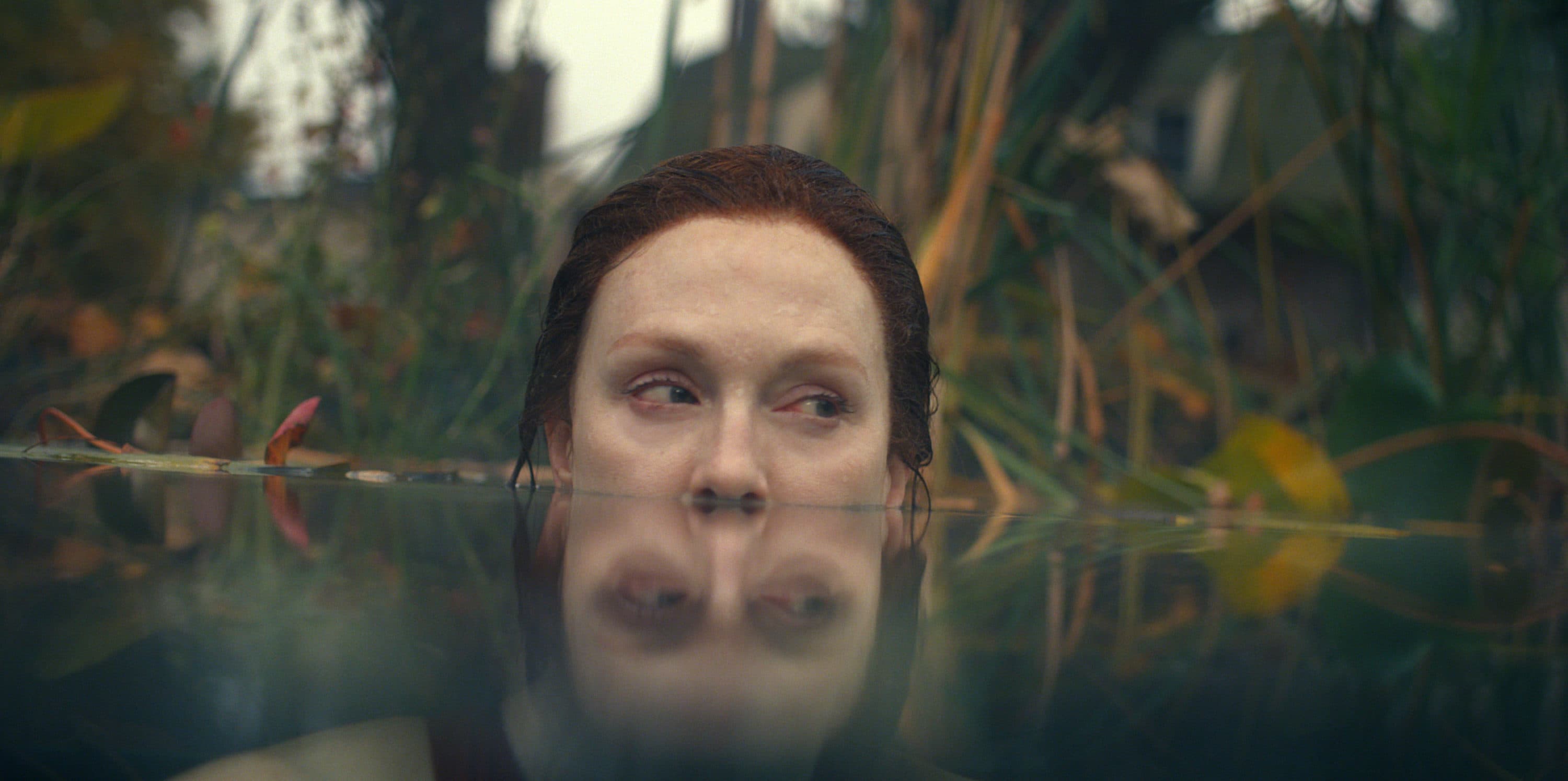
“Lisey’s Story” is the most boldly cinematic take on a Stephen King book since “The Shining.” This eight-episode series might have been made for a streaming service, but it’s got a prestigious pedigree and a visual daring unseen in the author’s adaptations since his early Hollywood heyday, back when King novels served as source material for household name directors like Stanley Kubrick, John Carpenter and Brian De Palma. Sure, we’ve seen a bumper crop of King material these past few years — no doubt thanks to the runaway blockbuster success of 2017’s “It.” But for the most part, these projects have been flimsy, televisual affairs like the recent CBS All Access reworking of “The Stand,” with even big-screen efforts like “Doctor Sleep” feeling more like the chintzy, network miniseries that came to define King’s brand in the 1990s and beyond.
Directed by Chilean bad boy auteur Pablo Larraín, “Lisey’s Story” has no shortage of movie star wattage and filmmaking brio to burn. Fronted by Julianne Moore and backed up by Oscar nominees Clive Owen, Joan Allen and Jennifer Jason Leigh, the series was also shot by legendary cinematographer Darius Khondji, who sets every scene within a sophisticated play of bottomless shadows and eerie, incandescent blasts of color. “Lisey’s Story” is as breathtaking to look at as anything you’ll see this year, and the opening episode drops the viewer into a jaggedly edited, dazzlingly expressionistic exploration of grief and its reverberations.
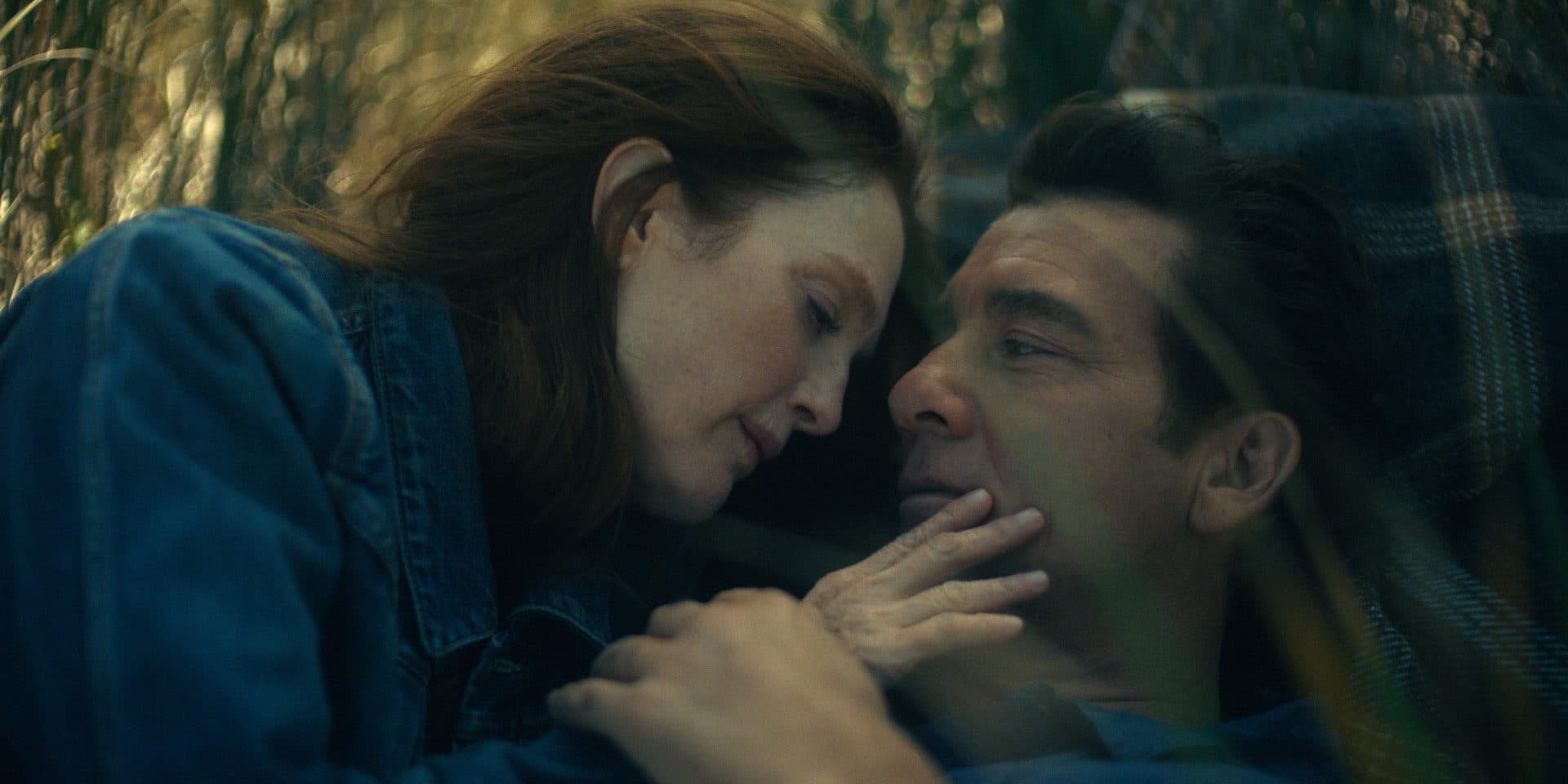
Moore stars as the recently widowed Lisey Landon, whose husband Scott (Owen) was a hugely successful genre fiction novelist at a rock star level similar to Stephen King himself, with a devoted fan base so obsessed that one of these guys (nicknamed “deep space cowboys” by the author and his wife) went and shot him a couple of times at a publicity event. This isn’t an unfamiliar milieu for King, whose “Misery” famously delved into the contentious relationship between artists and superfans. But this time it’s even more personal, as the writer has said he was inspired to write “Lisey’s Story” after being struck by an automobile in 1999 and imagining what life would be like without him for his long-suffering wife, Tabitha. For this reason, King has called the 2006 book his favorite of all his novels, which is presumably why he signed on to write all eight episodes of the series himself. As you might have guessed, it’s a doggedly faithful adaptation, one that could have benefitted from some distance.
The plot kicks in two years after Scott’s death, when Lisey is being harassed about her husband’s library full of notebooks and unfinished stories by an unscrupulous university professor (Ron Cephas Jones) who eventually hires one of those unhinged “deep space cowboys” to head up to Maine and intimidate her into donating Scott’s papers for posterity. The goon is played by off-brand DiCaprio wannabe Dane DeHaan in the series’ one bum performance, more monotonous than malevolent. Lisey doesn’t have time or temperament for this right now, as her mentally troubled older sister Amanda (played by Allen) has gone catatonic after yet another suicide attempt, and surly kid sis Darla (a pricelessly sarcastic Leigh) isn’t exactly the supportive type.
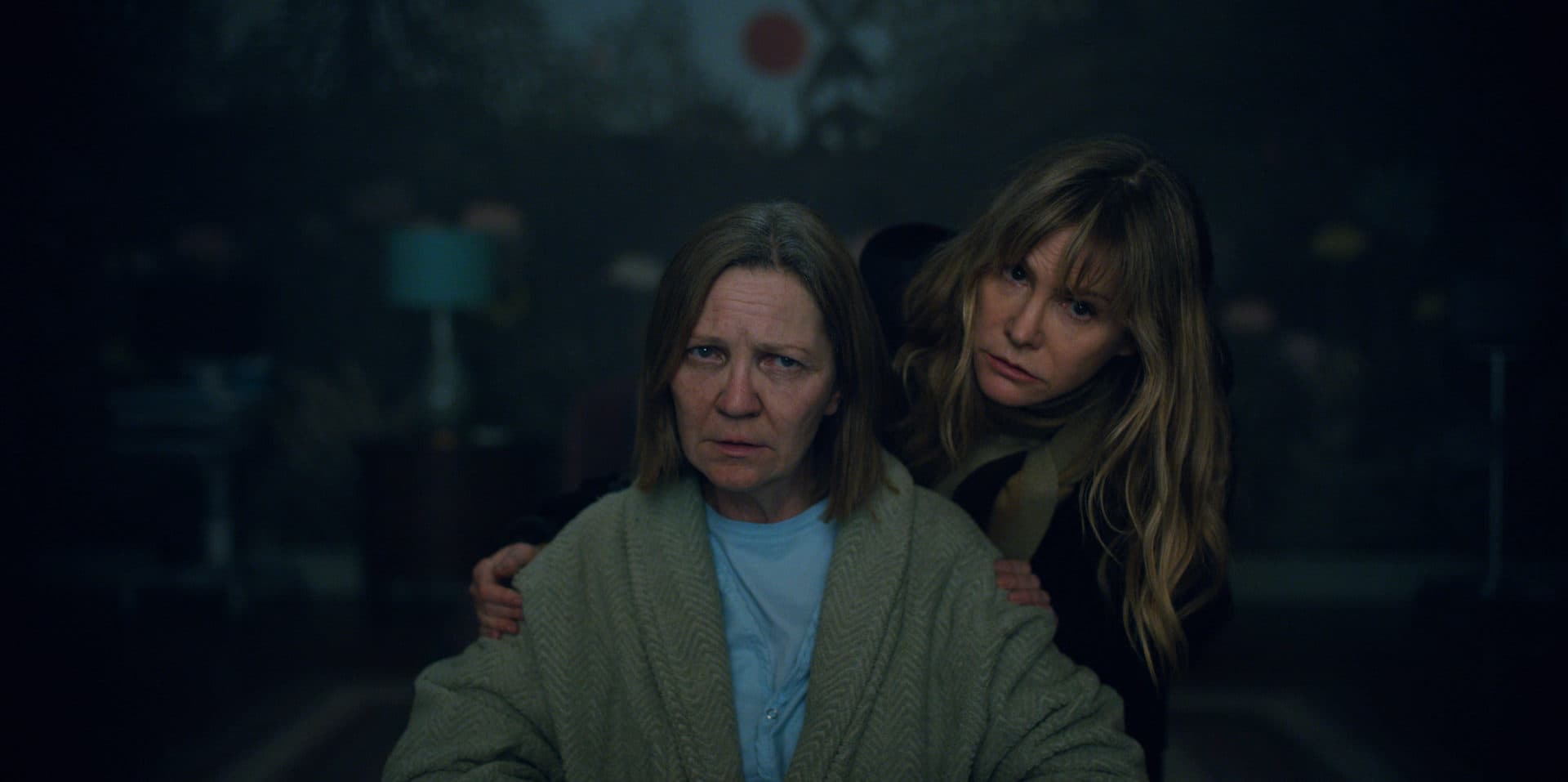
Larraín’s entrancingly artsy 2016 “Jackie” turned the White House into the Overlook Hotel, with Natalie Portman’s blood-spattered widow wandering the historic halls like a ghost in a pillbox hat. The best segments of “Lisey’s Story” have a similarly shell-shocked effect, collapsing past and present with sunnier scenes from the Landon’s marriage bleeding into the echoey, empty now. Moore and Owen — who “Children of Men” fans will recall have tremendous chemistry together — play these characters from their post-collegiate 20s into middle-age with minimal makeup alterations. It makes the flashbacks seem somehow sadder, as if their youth was prematurely aged by what’s to come.
The most arresting aspects of “Lisey’s Story” feel like a stealth remake of “Jackie,” with Larraín again following the widow of a beloved public figure trying to decide how best to supervise his legacy, facing tough decisions about how much of him belongs to the world and what should remain theirs alone. There’s a vertiginously unmoored quality to these early hours, haunted by memories that creep into scenes uninvited, and a vaguely sinister wedding band that won’t stop playing “Too Late to Turn Back Now.” Larraín loves putting his leading lady smack in the center of the frame with a super-wide-angle lens distorting the edges of the world around her, watching Lisey woozily maneuver through these emotional minefields. A bravura silent set piece in the penultimate episode flashes back to Scott’s funeral service, the camera claustrophobically tailgating Moore as she moves through crowds of mourners who drift wordlessly out of focus.
Advertisement
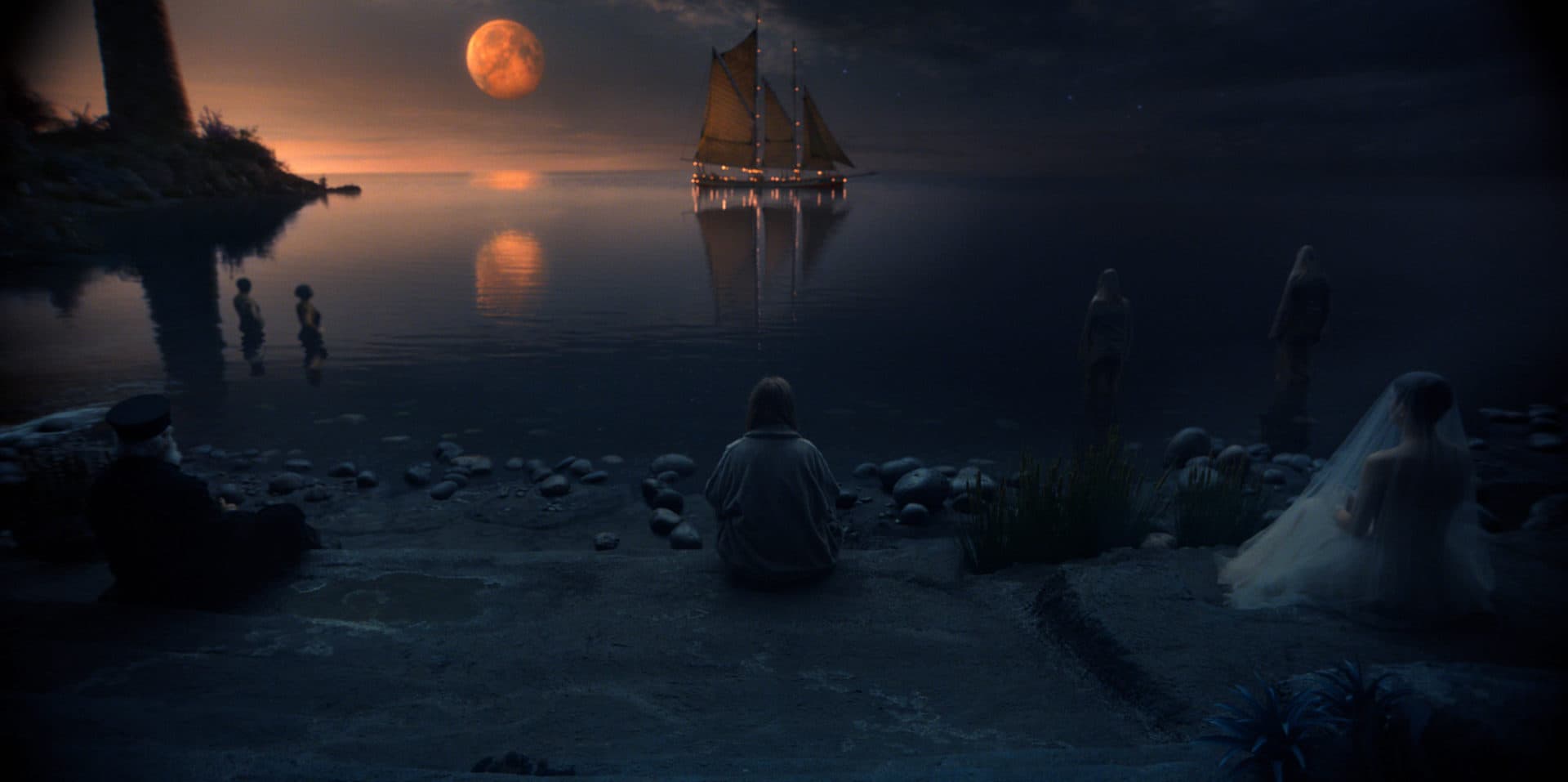
Of course, since this is a Stephen King adaptation, there also must be some supernatural business afoot. It seems Scott’s been leading Lisey on a sort of posthumous treasure hunt, collecting totems from their past with clues on how she can access a secret nighttime netherworld full of incandescent plant life, where lost souls sit around in hoodies under a blood orange moon in what looks like an after-hours version of Led Zeppelin’s “Houses of the Holy” album cover. In a classic bit of cringe-inducing King nomenclature, this visually ravishing alternate realm is known as “Boo’ya Moon,” and I honestly have no idea what was going on there most of the time. Not just because most of the breathy exposition is delivered in Owen’s vowel-swallowing approximation of an American accent, but also because it’s all over-explained in a way that only makes things even more confusing. (The most satisfying moment in the series comes when Moore tries telling her sisters exactly what’s happening and Leigh devastatingly deadpans, “I haven’t had my coffee yet.”)
Larraín is a filmmaker who thinks in images and abstractions. King loves to create extravagantly detailed fantasy universes and the tension between these two approaches isn’t always productive. Especially since King’s in maximalist mode again, and with the amazing elements at play here one wishes another writer would have rooted through the material and pulled out a clear throughline to where this was all supposed to be headed. “Lisey’s Story” wanders so far afield in its flabby midsection it becomes something of a slog. Had I been watching these episodes week to week, I’m not sure I’d have returned after the fifth installment, which depicts Scott’s childhood abuse at the hands of his father (a twitchy, terrifying Michael Pitt) in such vicious and unnecessarily protracted fashion one can’t help but wonder, to what end?
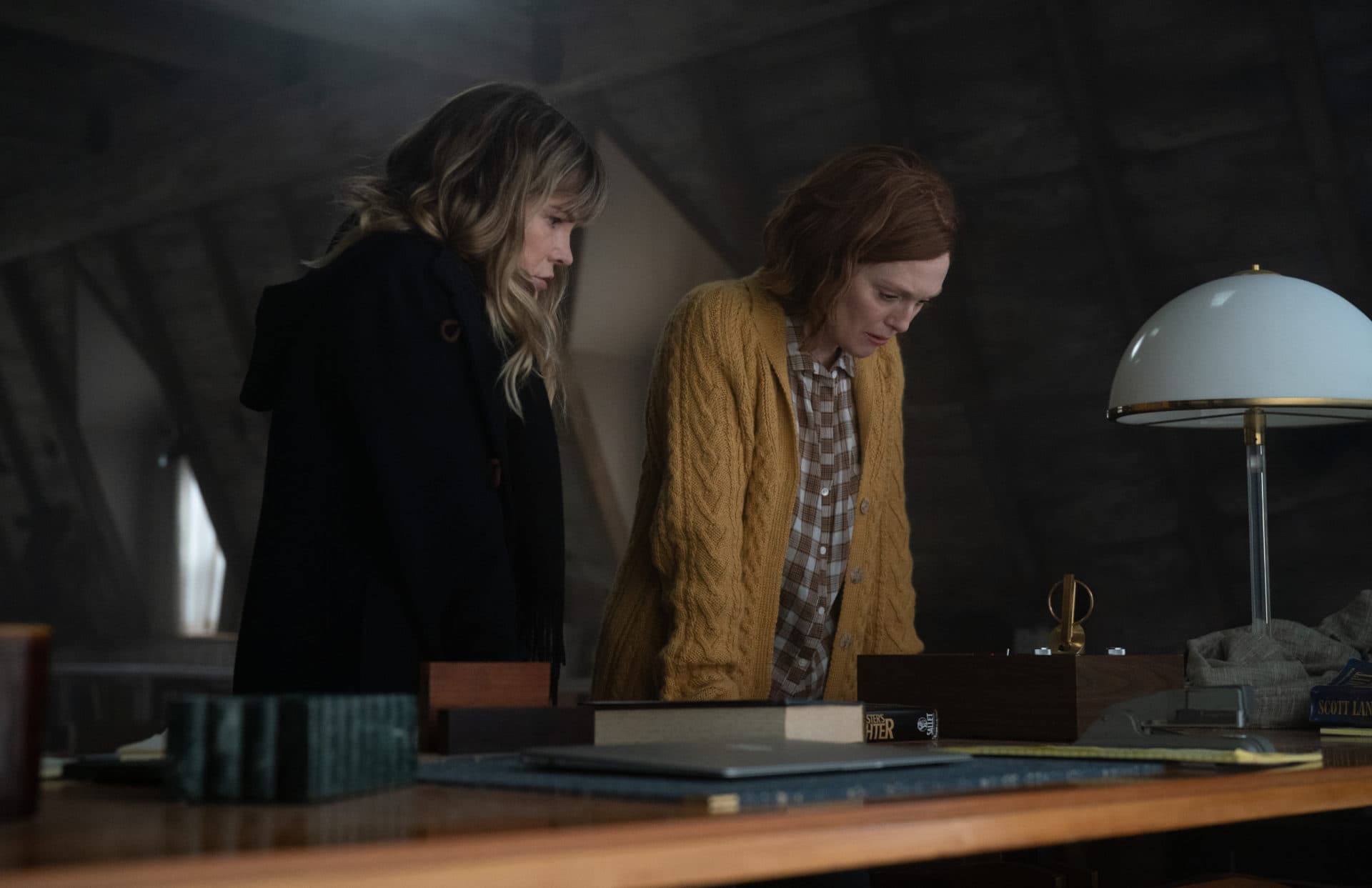
And yet. Moore is one of our all-time great screen sobbers, and the back half of the miniseries offers a fairly comprehensive overview of all she can do, toughening Lisey up to terrific effect and even eventually indulging in some crackling comic chemistry with the other actresses. Watching them, you’ll be baffled as to why it’s taken so many years for someone to cast Julianne Moore and Jennifer Jason Leigh as sisters, with the latter’s vinegary line readings an unadulterated delight. These three gals become so much fun together, one can’t help but groan when the final hour returns once more to the tedious matter of the dead husband’s hyperbolically gruesome childhood.
There’s a delicious irony — one I’m guessing might have escaped the actual author — that in the end this character has reached all the way from beyond the grave to gift his wife with a book called “Lisey’s Story,” and he wrote it all about himself.
"Lisey's Story" starts streaming on Apple TV+ Friday, June 4.
